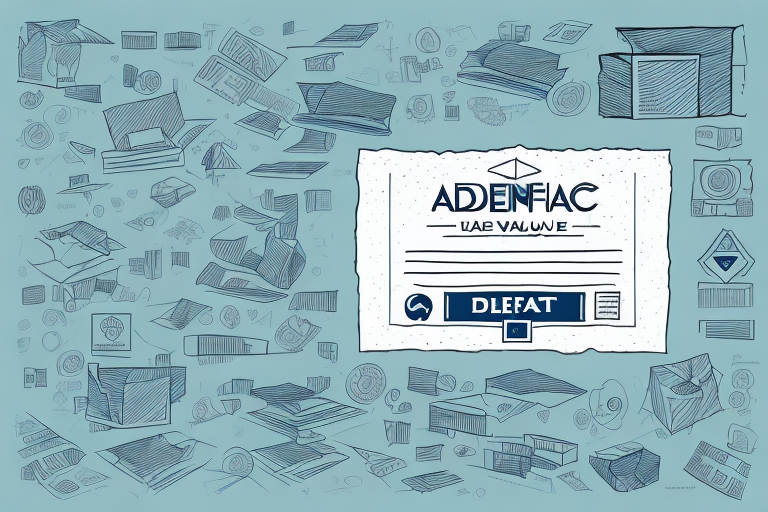Understanding UPS Declared Value and Its Benefits
When it comes to shipping items, protecting your valuable goods is paramount. One effective way to ensure this protection is by utilizing the UPS Declared Value program. In this comprehensive guide, we will delve into what UPS Declared Value entails, its benefits, limitations, and all the essential information you need to know to safeguard your shipments effectively.
What is UPS Declared Value?
The UPS Declared Value program is an optional service that allows you to declare a higher value for your package than the standard carrier liability. This means that if your package is lost or damaged during transit, you are eligible for compensation up to the declared value amount. Unlike standard carrier liability, which offers limited coverage, the Declared Value program provides enhanced financial protection for your shipment.
Declared Value vs. Insurance
It's important to differentiate between UPS Declared Value and insurance. While the Declared Value program offers protection against loss or damage, it is not a substitute for insurance. Insurance can provide broader coverage, including protection against additional risks that Declared Value does not cover. For comprehensive protection, consider purchasing separate insurance in addition to declaring a higher value.
Benefits of Using UPS Declared Value
- Enhanced Protection: Provides higher compensation limits in case of loss or damage.
- Customer Assurance: Demonstrates to your customers that you take responsibility for their shipments.
- Cost-Effective: Can save you money in the long run by minimizing out-of-pocket expenses for lost or damaged items.
- Peace of Mind: Offers reassurance that your valuable items are protected during transit.
UPS Declared Value vs. Carrier Liability
All packages shipped through UPS include a standard carrier liability coverage, which offers limited financial protection. However, this standard coverage may not be sufficient for high-value items. By declaring a higher value through the UPS Declared Value program, you ensure that the compensation aligns more closely with the actual value of your shipment.
Eligibility and Restrictions
The Declared Value program is not universally applicable to all shipments. Certain items, such as cash, jewelry, and antiques, may have specific restrictions or require additional documentation. Always consult the UPS Declared Value Terms and Conditions to verify eligibility and understand any limitations.
Calculating and Adding UPS Declared Value
How to Calculate Declared Value
Calculating the cost of UPS Declared Value involves determining the value of your shipment. For domestic packages, the fee typically starts at $3 for every $100 declared. The maximum declared value you can specify is $50,000. For international shipments, fees may vary based on the destination country and the package's value. Utilize the UPS Declared Value Calculator to estimate the cost accurately.
How to Add Declared Value to Your Shipment
To add a declared value to your shipment, follow these steps:
- Log in to your UPS account.
- Create a shipping label as you normally would.
- In the 'Value of Contents' section, enter the declared value amount.
- Review and confirm the additional fee before finalizing your shipment.
You can also declare the value online or by contacting UPS customer service directly.
Coverage and Limitations of UPS Declared Value
Covered Items
The UPS Declared Value program covers a wide range of items, including electronics, jewelry, and other high-value goods. However, specific exclusions apply:
- Cash and negotiable instruments
- Hazardous materials
- Perishable items not packed to withstand shipping
- Items damaged due to improper packaging
Excluded Items
Even with a declared value, certain items are not covered. These include:
- Antiques and artwork (without additional documentation)
- Items damaged by natural disasters or acts of terrorism
- Losses resulting from delays in transit
For a complete list of exclusions, refer to the UPS Declared Value Terms and Conditions.
Common Mistakes to Avoid
When declaring a value with UPS, avoid the following common mistakes to ensure smooth processing and adequate coverage:
- Under-Declaring Value: Not declaring the actual value can result in insufficient compensation.
- Poor Packaging: Failing to properly package items increases the risk of damage, which may not be fully covered.
- Ignoring Terms and Conditions: Not understanding the program's limitations can lead to unexpected exclusions.
Always declare the accurate value of your items, use appropriate packaging materials, and thoroughly read the service terms to avoid these pitfalls.
Filing a Claim for Lost or Damaged Packages
If your package is lost or damaged during transit and you have declared a value, you can file a claim with UPS to receive compensation. Follow these steps to file a claim:
- Gather necessary documentation, including proof of the item's value and shipment.
- Visit the UPS Claims Center.
- Complete the online claim form with all required details.
- Submit the claim and monitor its status through your UPS account or by contacting customer service.
Ensure that you file the claim within the stipulated timeframe as outlined in the Declared Value Terms and Conditions to avoid delays or denial.
Alternative Shipping Options with Declared Value Coverage
While UPS offers robust declared value coverage, other shipping carriers like FedEx and USPS provide similar services. However, the terms, coverage limits, and costs may vary. It's advisable to compare the declared value offerings of different carriers to determine which best suits your shipping needs.
Frequently Asked Questions about UPS Declared Value
- What is covered by the UPS Declared Value program? Coverage typically includes loss or damage during transit up to the declared value amount, excluding specific exclusions outlined in the terms.
- How do I add Declared Value to my shipment? You can declare the value while creating your shipping label online, through your UPS account, or by contacting UPS customer service.
- How do I file a claim for a lost or damaged package? Claims can be filed online via the UPS Claims Center by providing necessary documentation and details about the shipment.
For more detailed information, visit the UPS Claims Center or contact UPS customer service.
Tips for Saving Money on Shipping Costs with Declared Value Coverage
Maximizing savings while ensuring adequate coverage can be achieved through the following strategies:
- Consolidate Shipments: Combine multiple items into a single package to reduce the number of declarations and associated fees.
- Select Slower Shipping Methods: Opting for slower shipping options can lower the cost of Declared Value services.
- Use Shipping Aggregators: Compare rates from different carriers using shipping aggregators to find the most cost-effective options.
- Leverage Carrier Discounts: Inquire with UPS about available discounts or promotional rates for Declared Value services.
Implementing these tips can help you manage shipping costs effectively while maintaining the necessary protection for your valuable shipments.
Overall, the UPS Declared Value program is a valuable tool for anyone shipping high-value items. By understanding its benefits, limitations, and best practices, you can ensure your shipments are adequately protected, providing peace of mind and safeguarding your financial interests.






















